Samcheok Jeongwol Daeboreum Festival (삼척정월대보름제)
11.7 Km 7224 2024-02-07
45 Expo-ro, Samcheok-si, Gangwon-do
+82-33-571-3225
Samcheok Jeongwol Daeboreum Festival is a festival that blends gijuldarigi, Samcheok's local game of tug-of-war, with other traditional customs of Jeongwol Daeboreum, the first full moon of the Lunar Year. The festival aims to preserve and develop both national and regional customs and traditions as well as to promote the local economy and provide an opportunity to bring the community together.
Jukseoru Pavilion (삼척 죽서루)
11.9 Km 18736 2020-05-20
37, Jukseoru-gil, Samcheok-si, Gangwon-do
+82-33-570-3670
Jukseoru Pavilion, estimated to have been built around 1266, is one of the eight major attractions of Gwandong District in middle eastern Korea collectively known as Gwandong Palgyeong (eight famous sites). Sitting on the edge of a cliff overlooking Osipcheon Stream, the pavilion incorporates the rocks on the cliff as cornerstones, with a five-girder paljak (ancient-style roof).
Then, there are 26 signboards hanging from the rafters of the pavilion. The signboards contain inscriptions of famous ancient scholars such as 'Jeilgyeongjeong' ('The best riverside pavilion'; 1662) by Heo Mok, 'Jukseoru' and 'Gwandong Jeilru' ('The best pavilion in Gwandong'; 1711) by Yi Seong-jo, and 'Haeseon Yuhui Jiso' ('The place that marine gods enjoy'; 1837) by Yi Gyu-heon. Others who have left their mark include King Sukjong (1674-1720), King Jeongjo (1776-1800) and Yulgok YiYi (1536-1584). Evidently, Jukseoru Pavilion has served as an inspiration since its establishment, and continues to inspire visitors today through the stunning view of its surrounding nature.
Samcheok Maengbang Yuchaekkot Village (삼척 맹방유채꽃 마을)
12.4 Km 8011 2024-03-08
3916-112 Samcheok-ro, Geundeok-myeon, Samcheok-si, Gangwon-do
Maengbang Yuchaekkot Village is where one can enjoy the scenic view of canola flowers, cherry blossoms, and the ocean all in one place. Located in Geundeok-myeon, Samcheok, this village was considered as a sacred land during the Goryeo dynasty. Now, it is a village that attracts a flock of visitors every April with beautiful canola flowers. The village also holds a canola flower festival every year to celebrate the beauty of canola flowers that bloom near the 4.2-kilometer stretch of cherry blossom road.
Samcheok Port – Along Saecheonnyeon Coastal Road (삼척항 - 새천년도로변)
13.1 Km 10300 2014-10-16
Jeongna-dong Samcheok Port– Along Saecheonnyeon Road, Gyo-dong, Samcheok-si, Gangwon-do
+82-33-573-4096,+82-33-575-1330
Leave your car behind and enjoy fishing along the seaside path that winds from the entrance of Samcheok Port to Saecheonnyeon Coastal Road.
Maengbang Beach (맹방해변)
13.6 Km 6116 2022-12-28
228-239, Maengbanghaebyeon-ro, Samcheok-si, Gangwon-do
+82-33-572-3011
Maengbang Beach is located 7 kilometers from Samcheok and was developed as a tourist attraction. During summer, there are various beach events such as the Myeongsasimni Race and bare-hand trout catching contest, and more. Nearby attractions include a golf range.
Mureunggyegok Valley Healing Campground (무릉계곡 힐링캠핑장)
13.6 Km 10553 2024-03-19
467 Samhwa-ro, Donghae-si, Gangwon-do
This campground is situated in Mureunggyegok Valley, nestled between Dutasan Mountain and Cheongoksan Mountain. The valley is renowned for its enigmatic rock formations and derives its name from the mythical paradise in the Chinese fable, “The Peach Blossom Land”. It's a place where one can immerse in the beauty of nature. The campground is accessible by car, just a 25-minute drive from KTX Mukho Station.
Dutasan Mountain (두타산)
13.8 Km 28195 2021-04-05
533, Samhwa-ro, Donghae-si, Gangwon-do & Samcheok-si, Jeongseon-gun
+82-33-534-7306
Standing at 1,357 meters above sea level, Dutasan Mountain is surrounded by famous natural landmarks: Mureunggyegok Valley to the north, Gocheongyegok Valley to the east, Taebaeksan Mountain range to the south, and Jungbongsan Mountain to the west. Moreover, situated along the 3.1 kilometer-long valley connecting Dutasan and Samhwasa Temple are such tourist attractions as Dutasanseong Fortress, Geumnamjeong Pavilion, Yongchupokpo Falls, Ssangpokpo Falls, Osipcheon Stream, and Cheoneunsa Temple.
Samcheok Hoetjip (삼척횟집)
13.8 Km 28961 2024-02-16
125 Saecheonnyeondo-ro, Samcheok-si, Gangwon-do
033-574-5240
Located near Samcheok Port, Samcheok Hoetjip is renowned for its excellent mul hoe (cold raw fish soup) and hoe (sliced raw fish). Mul hoe, particularly favored in summer for its cool and refreshing taste, is a highlight here. The seaside parking lot next to the restaurant houses the Isabu Sajabawi Rock. Additionally, Isabu Plaza and its Sky Deck are situated right beside it, offering a scenic walk opportunity to visitors.
Gangwon Yongchupokpo Falls (무릉계곡 용추폭포(강원))
13.8 Km 63743 2022-10-20
538, Samhwa-ro, Donghae-si, Gangwon-do
+82-33-534-7306
Located approximately 2.5 kilometers west of Samhwasa Temple, the entrance of Mureunggyegok Valley, Yongchupokpo Falls is a three-tiered waterfall in a shape of a pot that gets its waters from Cheongoksan Mountain (1,403.7 meters). Located 70 meters below Yongchupokpo Falls is Ssangpokpo Falls, where the water from Yongchupokpo Falls and Bakdalgyegok Valley meets to create a deep and beautiful base.
Mureunggyegok Valley (무릉계곡)
14.0 Km 89388 2020-07-13
538, Samhwa-ro, Donghae-si, Gangwon-do
+82-33-539-3700
Mureunggyegok Valley, between Dutasan Mountain and Cheongoksan Mountain, refers to a four-kilometer stretch from Hoamso Pond to Yongchupokpo Falls upstream. The waters of Mureunggyegok Valley flow over wide sheets of rock and into the cracks between them, forming large and particularly nice ponds along the path. Starting at Mureung Rock, a wide sheet of single rock on which hundreds can sit, the valley trail twists and turns as it passes Samhwasa Temple, Haksodae, Ongnyudong, and Seonnyeotang Ravine, all the way to Ssangpokpo and Yongchupokpo Falls, providing breathtaking scenery along the way. Also known as Arcadia, scholars and poets frequented the valley in times past, and the 5,000 square meters of Mureung Rock bears the inscribed names of some of these poets and their work. The valley offers a medley of curious-looking rocks and stones, and other odd scenery that attracts many tourists.
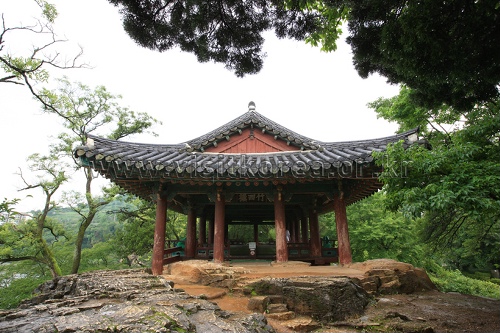
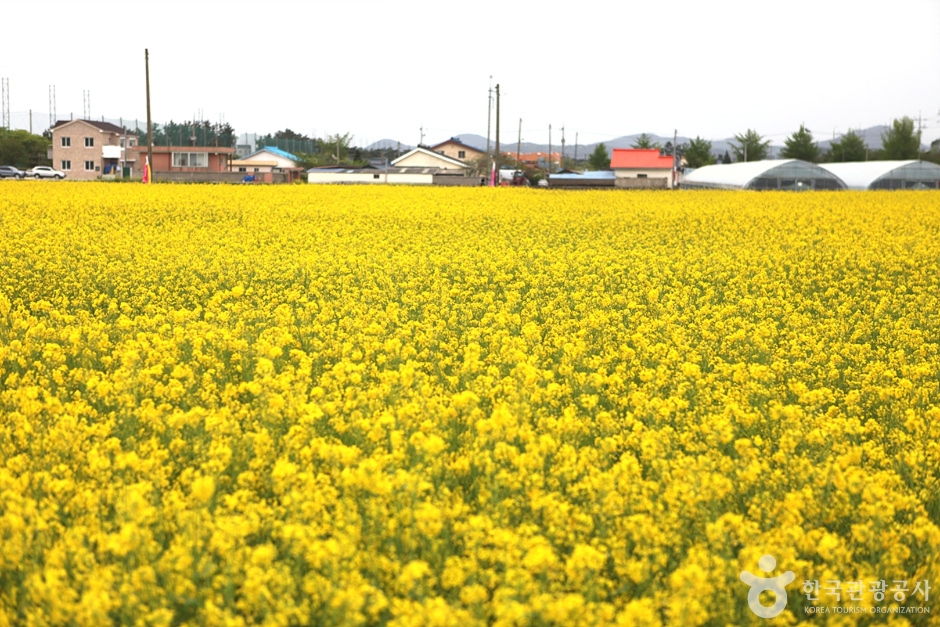
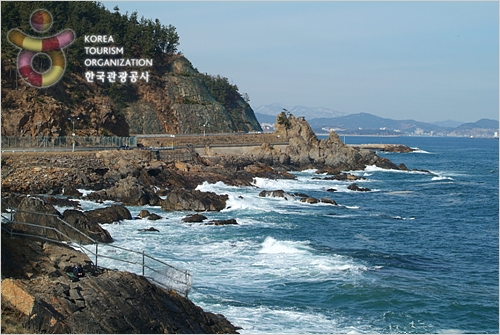

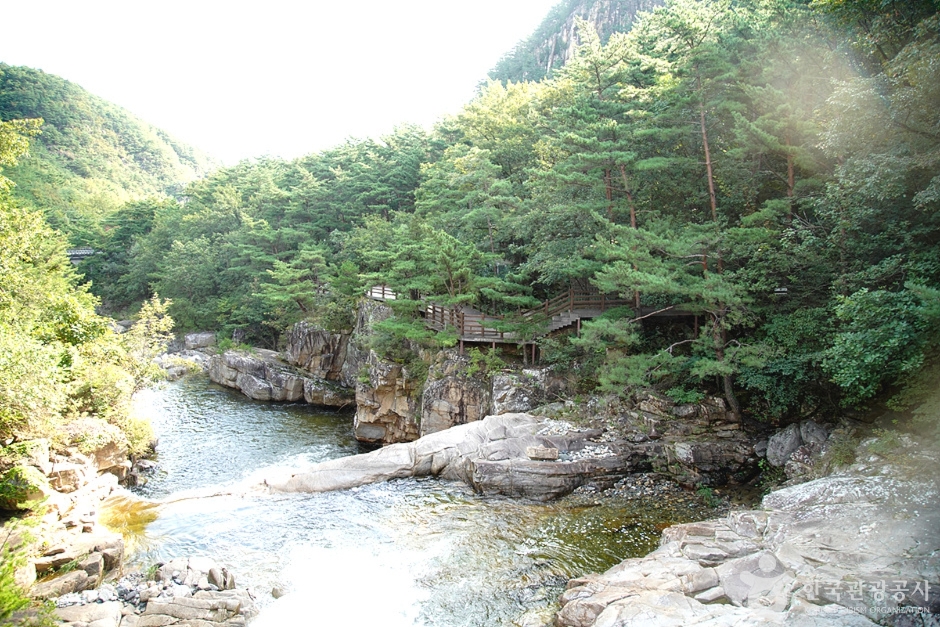
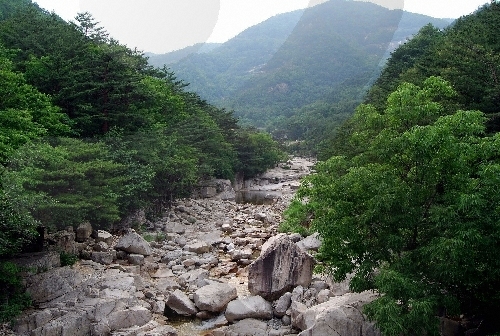
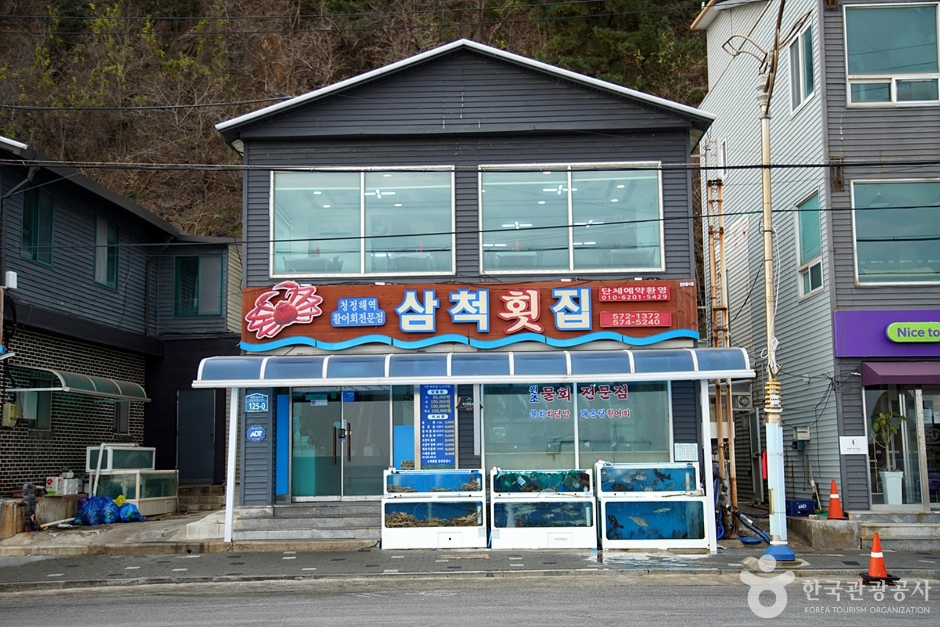
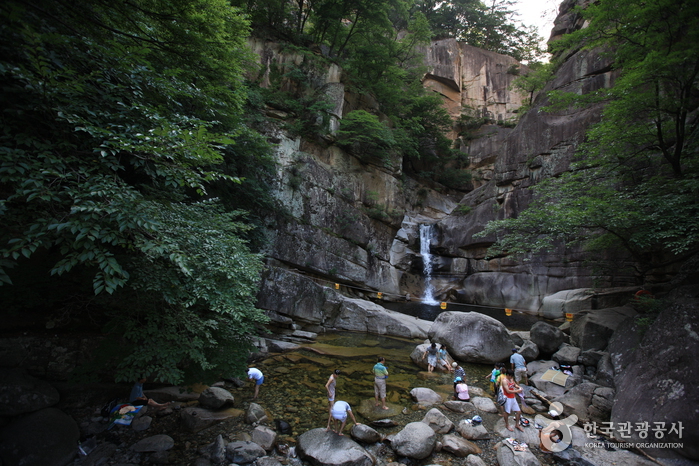
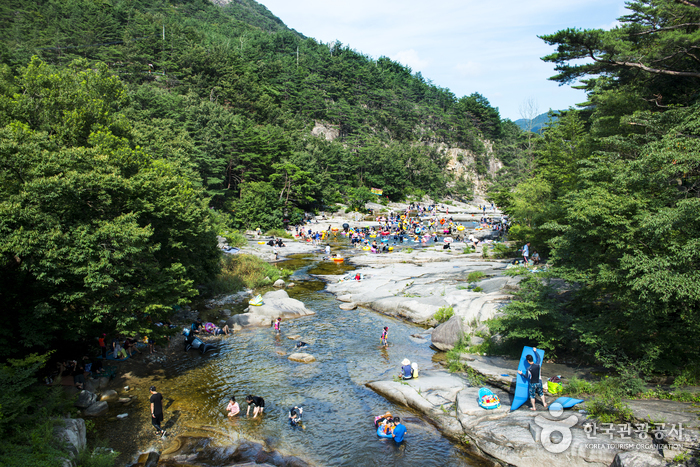
 English
English
 한국어
한국어 日本語
日本語 中文(简体)
中文(简体) Deutsch
Deutsch Français
Français Español
Español Русский
Русский